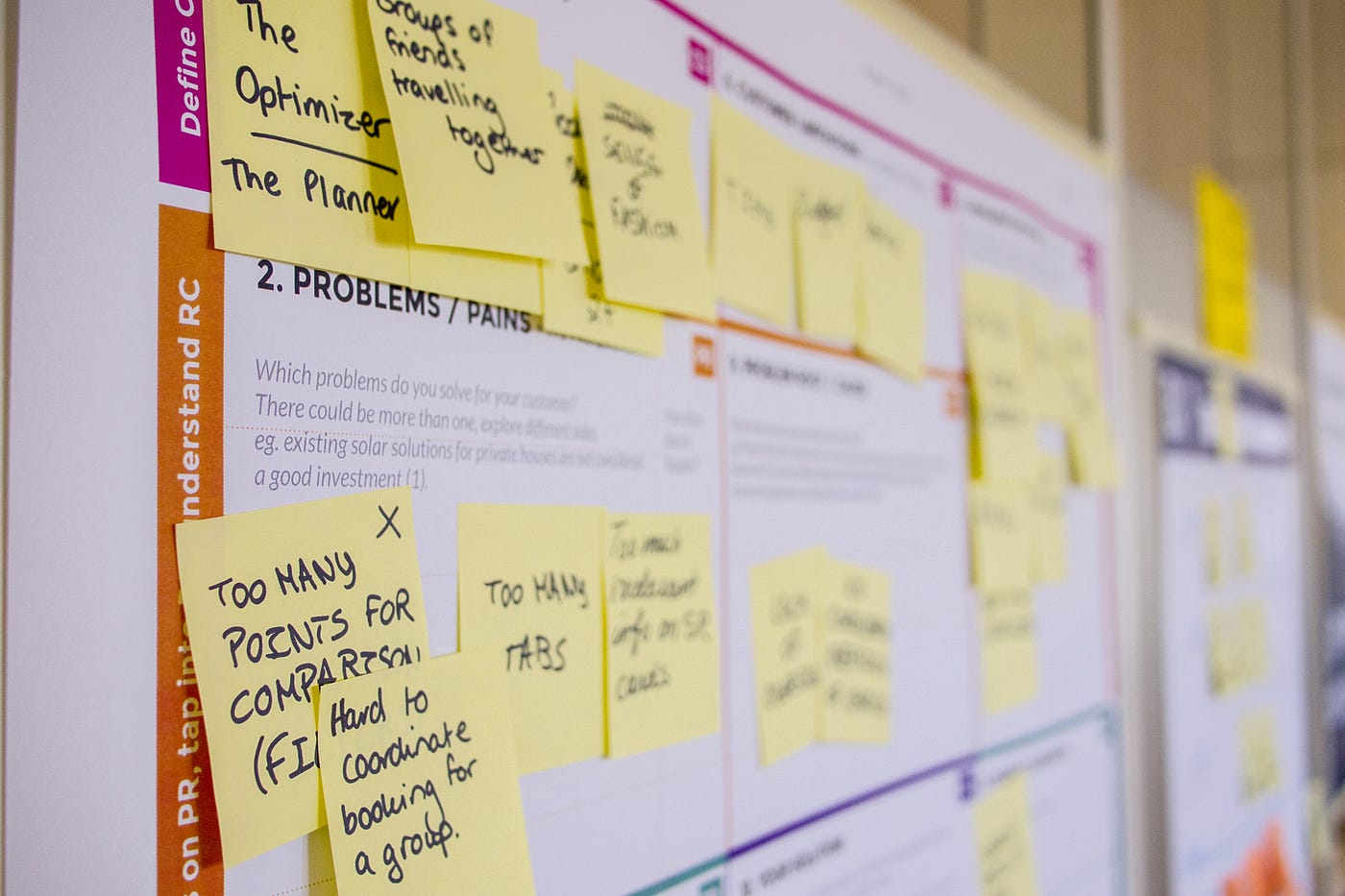
Unpacking Psychological Safety
A tool-set to create safety in the workplace
High performance teams are teams who trust each other. Teams who feel safe. Safe to admit when they don’t know the answers. Safe to ask for what they need. Safe to raise a red flag without the risk of being blamed for it. Safe to call out a dysfunction when they see it. Safe to express themselves and their personality. Safe to have an opinion, even if it’s controversial and not necessarily what you want to hear.
Your primary goal as leader is to create a safe environment, even in unsafe conditions. You can have the best team, but if they don’t feel safe, they will spend their brilliant minds devising strategies to be safe, not innovate or build awesome products.
When you remove the need for constantly having to play political games to remain safe within an organization, suddenly, you make available resources to help your teams fly, which in turn will help your company be more profitable.
What creates an unsafe environment?
To understand how to create a safe environment, it’s useful to understand what creates an unsafe environment first and simply do the opposite.
Sounds simple, yet, it took us 100 years plus to get where we are today. Undoing this will probably also take some time. Not 100 years, but it’s not a switch of a button. It requires a cultural change. And cultural change takes time.
So let’s unpack what unsafe looks like first before jumping into how to create safety.
Problem #1. Lack of information.
Bad communication, especially the inability to provide feedback and make information available, is the root of all evil in my opinion.
When people don’t know what is going on, who they can speak to, and where to find things, they feel unsafe. It’s like walking in a dark tunnel. You are afraid because you don’t know whether you might touch a spider, walk into a wall or slip or trip on an obstacle in the road.

Solution #1 — How do you give feedback?
Introducing more transparency is by far the most powerful tool to increase psychological safety.
A simple Kanban board is one example of introducing transparency. So too is removing restrictive user access (which simply screams I don’t trust you!), descriptive job titles and products, reducing the amount of documentation (aka removing possible hiding places for failures) and making meetings open to be attended by anyone interested.
On a more cultural level, however, safety is introduced by providing feedback (not to be confused by criticism, which has little value compared to feedback). What are you doing wrong and why? More importantly, what are you doing right and why?
From a business perspective, communication is a free tool that can be implemented right away. Why would you choose not to use it? For more on my view on how to be a better communicator and 10 simple techniques to be a better communicator, read The Real Answer to Life, The Universe, and Everything.
Problem #2. The need for professionalism.
I don’t mean professional in its true meaning of being considered competent at a craft or profession. I mean professional more commonly used in the context of separating your personal and work life. Asked to wear a mask. Asked not to be influenced by the ups and downs of life or the invisible political warfare in the office environment.

Photo by Joey Nicotra on Unsplash
Many professions require you to wear a uniform. When you step into your uniform, you step out of your personality. For the next few hours, you put aside everything that does not make you the soldier or surgeon or superhero. When Superman doesn’t wear his uniform, he’s just nerdy Clark Kent.
The uniform can be helpful, but it can also be harmful.
The average organization today requires people to be ‘professional’ at work. They are asked to blend in and abide by the unspoken rules, which often ends up being the opposite of safe.
The opposite of psychological safety is professionalism.
Some people love wearing shorts and T-shirts to work. Other people love dressing up. Similarly, some people are most productive in the mornings, others at night.
But all people have emotions. And unless you’re on anti-depressants or anti psychotic medication, these emotions fluctuate. Sometimes there’s highs, sometimes there’s lows. Sometimes you are inspired. Other times you are tired. Stuck. Unproductive.
Solution #2 — How do you develop people?
Psychological safety is part of the a culture. Actually, it’s the foundation of culture. Decide what is acceptable and what not, and what to do about it.
To create a safe environment, create a culture of being human and a culture of personal development. A culture where it’s ok to have bad days. And good ones. A culture where you celebrate when a child is born and accommodate grief when a parent died, without expecting them to be as productive as they would on average.
Put tools in place to help people develop personally and increase their emotional intelligence. If you can’t afford a team coach, try peer-coaching. It’s like pair-programming, but for personal development. Two equal (this is very important) people partner and have regular, short coaching sessions for a defined, short time, to guide and hold the other party accountable to develop in an area of their choice on a personal (or professional) level.
Problem #3. Trying to be fair.
I’m not you and you’re not me. Being fair is not about treating everyone the same. It’s about giving everyone what they need and deserve in relation to their contribution.

Measuring people on a bell curve is asking people to be the same as everyone else. Yet, it’s the outliers that produce the talent, the new thinking and the innovation that you really yearn for. It’s what makes people different from everyone else that makes them valuable.
What is fair to expect from one person is not necessary fair to expect from the next.
For a more detailed view on equality, please read The Secret Behind Your Unhappy Workforce.
Solution #3 — What do you reward people for?
Scrap the defaults. They’re mostly wrong in any case. Whole companies have whole people. Whole people are people with personalities and hobbies and preferences.
Make everyone a winner. Rather than having one employee of the month, reward each person for how they contributed to the success of the team as a whole. One person might have contributed with a creative solution to the problem. Another might have helped to maintain the harmony in the team when things got hot. Someone else might have been responsible for calming down an angry customer. Another for doing all the admin that no-one else wanted to do.
Train yourself to reward contributions towards a mutual goal rather than simply measure success and producing averages.
Problem #4. Lack of personal confidence.
Closely related to professionalism, but something out of the control of the leader, is probably the biggest cause for people to feel unsafe, but it is something that you can influence. It might be because they are new to the industry, in a more senior role than what they’re used to, or simply because they don’t realize their value.

Photo by Drew Hays on Unsplash
It could also be because your expectations are too high, or you expect your team to know all the answers, or because you don’t show them your vulnerable side.
Solution #4 — How do you demonstrate failure?
There are two dimensions of building confidence, the first is to lead by example and being willing to be vulnerable.
Admit when you don’t know all the answers. Read more about why this is actually a good thing in 5 Reasons Why Not Knowing All the Answers Makes You a Better Leader. Celebrate failure. Allow space for mistakes.
Perfection is a waste.
The second dimension is to build confidence by providing feedback, which has already been discussed in solution #1. Specifically, help the person to see their value. Tell them what they’re good at and why. Focus on what they are doing right, not how they can be better.
Problem #5. A lack of trust.
A symptom showing a lack of trust in an organization is micro-management. Focusing on the how rather than the why. When you don’t trust people, you want to control them. When you want to control them, the natural consequence is that it is not safe for them to be them.
Solution #5 — How do you lead?
Trust is about letting go and probably the hardest lesson of all to learn. It’s about having the best interest of everyone at heart — not only your own. It’s about giving a challenge and allowing the team to find their own solution, using their own tools and their own time to do it.
Building trust is a process rather than a project with a defined end-date. It requires that you, as leader change, rather than expecting your team to change.
To build trust, consistently — over and over and over and over again — demonstrate presence and support. For more strategies to build trust, read 5 Ways to Build a Culture of Trust.
Staying Safe
Ultimately, establishing psychological safety is a process of earning trust. It requires, above everything else, presence, consistently. When you are able to be present, naturally you will listen and enable and understand.
The consequence of being too busy is that trust is broken. And winning trust back is much harder than keeping it in the first place. So each day, ask yourself this one question:
“Am I breaking or building safety with what I am about to do or say?”
Originally published on Medium: https://medium.com/teal-times/unpacking-psychological-safety-9f157ef3c8ca
